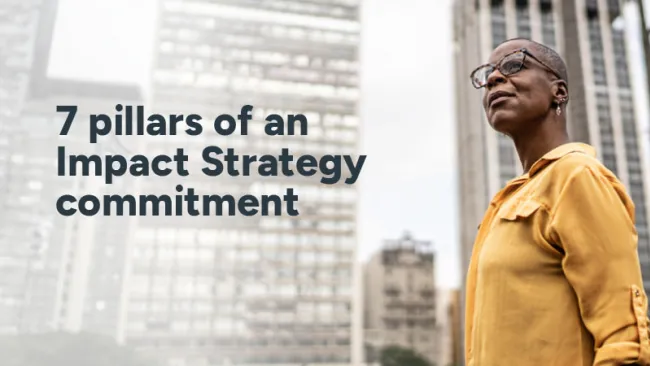This blog was excerpted from the upcoming Winter 2020 issue of the Customer Strategist Journal. Subscribe today to get the whole story, delivered in January.
Messaging platforms like SMS, Facebook Messenger, Apple Business Chat, and WhatsApp (among many others) are our go-to preference for interacting with our friends and family every day. Savvy brands are quickly realizing that embracing these platforms is critical to meeting billions of customers where they are, all the time—on their smart devices.
As organizations begin to master messaging, they need to be aware of the near constant state of evolution for these devices. Each major update introduces new ways to communicate, laugh, and connect via messaging. Just recently Apple’s IOS 13.2 update introduced 398 new emojis that will expand our digital vocabulary and pop culture.
Leaders also need to recognize that enabling messaging will require associates who can maneuver and understand the channel effectively. Sometimes this means ditching the old skills and habits that worked for traditional voice and chat channels.
As companies embrace messaging, there is a lot of misinformation and misunderstanding out there. Before leaping into the channel, it’s important to spot the fiction from reality when it comes to delivering great messaging experiences. We’ve debunked some of the most common messaging myths out there.
Myth #1: Messaging = Chat
Chat is/was a dedicated interaction session that pops up on a brand’s website and/or mobile app. And while chat serves a purpose in the omnichannel ecosystem, these platforms often keep the customer glued to one channel, ineffectively. Users must wait with the window open for the other person to respond, and if anyone closes the window, the session is canceled with the interaction history lost. Information is not saved on the customer side, and may or may not be saved on the brand side.
Messaging, on the other hand, allows for asynchronous, personal, and immediate communication between a customer and associate via a mobile phone SMS platform like Apple’s iMessage or Facebook Messenger. This allows for an always-on connection to a brand, where previous conversations are saved and current conversations can happen as easily as a text message to a friend.
Myth #2: The tech is all you need
Messaging is fun, personal, and casual. It creates an environment where users feels like they are talking to a friendly in-store associate. That’s why it’s critical to lead with customer experience strategy and design, not the tech. What journeys do you want customers to have via messaging? What skills and tone should associates have when interacting?
Don’t be so quick to offer a tool to your customers that is not in good hands. Customers use messaging apps because they are easy and familiar to use, so don’t risk your brand’s reputation with a rushed product solution that hasn’t been designed to meet specific customer needs.
Myth #3: All messaging channels are created equal
Prioritize your channels to set up iteratively, and not all at once. You do not need to be on Facebook Messenger, in-app, Apple Business Chat, WhatsApp, WeChat, Snap, Instagram, and others all at once. Each have different nuances, so prioritize, iterate, learn, and expand to new ones slowly.
Myth #4: If you build it, customers (and employees) will come
You need to direct customers to the new channel(s) by redesigning your customer experience strategy to fit into their journeys. Customers need a compelling reason to use messaging. Don’t just assume they will. Make sure they know it’s there and how it can benefit them.
Myth #5: Once you open the messaging channel(s), you’re finished
Always refine and update based on insights and feedback, especially when introducing automation into messaging. The platforms your customers are using regularly are constantly evolving, so your messaging strategy needs to as well.
Myth #6: You can keep the same metrics
Metrics need to change, period. For instance, traditional metrics like AHT (average handle time) have no relevance in messaging. Your metrics need to be more outcomes-based rather than efficiency-based, as consumer behavior and expectations in messaging channels are different than in voice. Good places to start (and iterate from), should include first contact resolution, CSAT/NPS, number of concurrent messages per agent, and customer effort score.
Myth #7: Voice and messaging agents are the same
Voice agents do not equal messaging agents, and to a lesser extent the same is true for chat agents. Just because you have rock star voice agents does not mean that will translate to your tiger team of associates in the new messaging channels, for numerous reasons. Different skills such as tech savviness, comfort with informal language and emoji-driven shorthand, typing speed, and ability to improvise and quickly problem solve are highly desirable.
Myth #8: Messaging is mostly used to resolve customer service issues
Messaging exists and thrives throughout the entire customer journey–from discovery to sale to service to re-purchase and loyalty-building. Messaging channels like Apple Business Chat, Instagram, WhatsApp, etc. are feature- and content-rich, and as such allow for some pretty cool and sophisticated interactions and experiences along all journey stages.
Get really clear on your customer journeys and key moments of truth in each, and start thinking about what’s possible beyond the obvious stuff. Chances are, the solution(s) can be built into messaging interactions.
Step up to the challenge
The customer experience industry’s move to messaging as the primary interaction channel is a crucial step in the transformation of brands to truly meet customers where they are, and where they want to be. But like any sport, just because you’ve seen the game doesn’t make you a pro-level athlete. The winners in messaging will be those who have practiced and understood the channel well before rolling it out. Learn the game, be open to new rule changes, then get out there and play.















